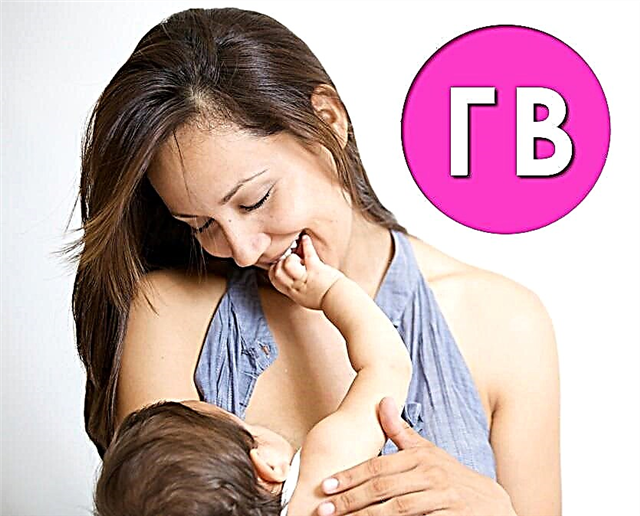
«Calcium gluconate"Is a domestic drug well known to many generations. To this day, it remains the most prescribed calcium supplement available. After reading this article, you will learn when and why a child may need this medication, how to use it to treat children, and what to consider.


About the drug
At a chemical level, calcium gluconate is a salt that is formed by the interaction of calcium and gluconic acid. The result is a white, tasteless powder that dissolves easily in water, but cannot dissolve at all in alcohol or ether.
In medicine, it is considered a valuable mineral supplement that has an excellent therapeutic effect for patients with hypocalcemia. This term refers to a calcium deficiency in the body.


Calcium is very important for children, because it protects bone tissue, teeth strength, and also participates in the process of hematopoiesis (responsible for blood clotting), plays an important role in the normal functioning of the muscular skeleton, as well as the cardiovascular and nervous systems. Without enough calcium, the pancreas and thyroid glands will not function normally.
It should be noted that calcium successfully performs all these functions only if it interacts with magnesium, phosphorus and vitamin D. Therefore, their sufficient amount is very important so that calcium can be fully absorbed and have a positive effect.

In children during the period of intensive growth, the need for calcium is high. But this does not mean that everyone, without exception, should take "Calcium Gluconate" for prevention. This drug is prescribed by a doctor only for those children who really need it. Otherwise, there is an excess of calcium, and this condition (like a deficiency) is quite dangerous for the health and life of the baby.
Indications for use
You can find out if a child needs this drug by visiting a doctor and taking blood tests for biochemistry. He will say in what concentration of calcium there is (this parameter is determined in mmol per liter), whether this level is sufficient. Usually the drug is recommended for the following conditions and diseases:
- hypocalcemia caused by inadequate or inappropriate nutrition;
- hypocalcemia accompanying various pathological changes in hematopoiesis, with low blood clotting;
- osteoporosis - an ailment in which the bone skeleton softens, loses strength;
- imbalance of nutrients, metabolic disorders - vitamin D deficiency;

- with established and confirmed rickets;
- with an urgent need to obtain a mineral (during the very rapid growth of a child or the eruption of several teeth at once);
- with large losses of calcium associated with taking diuretics, a prolonged illness, during which the child was forced to lie in bed for a long time, with prolonged diarrhea, as well as against the background of treatment with antiepileptic pharmaceutical agents;
- with allergies - both acute and chronic, expressed in skin manifestations (urticaria, dermatoses) and in respiratory (with allergic rhinitis, angioedema, bronchial asthma);
- with various bleeding;

- with muscle weakness (myoplegia);
- with liver pathologies caused by exposure to certain toxins;
- for colds, frequent and severe SARS, acute respiratory infections - to increase vascular permeability, which can be disturbed due to the effects of an inflammatory infectious process;
- with some nephritis.
Release form
The drug exists in two pharmacological forms - a tablet and a solution for injections. Tablets (dosages of 250 mg and 500 mg) are either hard or chewable. The solution is specially designed for intramuscular and intravenous administration.


For children's home use, only the preparation of calcium salts in tablets is suitable. The solutions are used for adult patients, they are often used by emergency doctors (in situations requiring an urgent response - with severe blood loss, with allergic edema or shock, for this the drug is administered intravenously or used in droppers). Children can also be given the drug intravenously - at a very low rate of administration. However, there must be very strong evidence for this. In no case should you do this on your own.
Instructions for use
Tablets should be thoroughly crushed before use. Children are given the resulting powder with a little water or breast milk. It is important to observe the age dosage, because an excess of calcium entails big problems. Doses for children:
- for babies up to 1 year old and newborns - no more than 0.5 g;
- for children aged 2 to 5 years - 1 g each (the maximum daily dosage should not exceed 3 g);
- children from 5 to 7 years old - 1.0-1.5 g (no more than 4.5 g per day);
- children from 7 to 10 years old - 2 g (no more than 6 g per day);
- children from 10 to 13 years old - 2.0-2.5 g (no more than 8 g per day);
- adolescents from 13 years old - 3 g (no more than 9 g per day).


It is better to divide the daily dose of the drug into 2-3 doses. The medicine should be given to the child before meals or an hour and a half after a meal. Crushed tablets must be taken with water or milk. Regarding the use of milk when taking calcium supplements, doctors still have not come to a consensus. Many experts argue that it is better to use plain water and avoid dairy products.
However, in the official instructions for the drug, the possibility of using milk is indicated - as a completely acceptable alternative. If in doubt, it is best to ask this question to your doctor.


During a severe allergic reaction (especially in the acute stage), children are prescribed "Calcium Gluconate" together with the intake of antihistamine drugs, since calcium enhances their effect. In case of an inadequate reaction to any other medications, calcium can be recommended as a remedy that can eliminate other people's "side effects".
The course of therapy with calcium tablets is on average rather long - from 10 to 30 days. For some children, according to the doctor's instructions, the course can be extended.


The so-called hot injection (10% calcium gluconate solution), preheated to body temperature, is administered in an amount of no more than 5 ml intravenously. This should be done every two or three days - with severe blood loss and convulsions, which pose a certain danger to the child, with poisoning with magnesium salts and severe skin diseases. Almost always - with acute and violent allergies that threaten the child's life, which are associated with the occurrence of edema, difficulty breathing.
Children should not inject solutions into the muscle and subcutaneously, the risk of developing tissue necrosis is too high.
Contraindications
The drug should not be given to children with certain contraindications. These include:
- individual intolerance, sensitivity to calcium;
- hypercalciuria - a condition when mineral salts are excreted in excessively high concentrations in the urine;
- hypercalcemia - an excess of calcium;


- tendency to increased blood clotting, to the formation of blood clots;
- atherosclerosis;
- with complex and severe types of renal failure;
- sarcoidosis.
Side effects
Usually, no concomitant unpleasant effects are observed when using this drug, if the dosage and schedule of therapy are not violated. In only a small percentage of cases, the following phenomena may occur:
- violation of the heart rhythm (like bradycardia);
- oversaturation of the body with calcium;
- increased calcium in the urine;
- nausea and vomiting;

- diarrhea or constipation;
- swelling of the legs, frequent urination (with kidney disease);
- the formation of stone-like deposits of mineral salts in the intestine (with prolonged use of high doses of the drug);
- allergic reaction.
Overdose symptoms
An excess of mineral in a child is not noticeable immediately, but only some time after the start of taking increased or unreasonable doses. Hypercalcemia can manifest itself with the following symptoms:
- constipation or prolonged diarrhea;
- vomiting;
- abdominal pain (in the abdomen);


- muscle weakness;
- high blood pressure;
- the formation of kidney stones;
- in especially severe cases - loss and confusion of consciousness, hallucinations, coma.
Analogs
- "Calcium glycerophosphate";
- Calcium Sandoz;
- "Calcium D" - syrup;


- "Calcium D3 Nycomed";
- "Kaltsinova".
Quite often, this useful and necessary mineral is included in the composition of multivitamin complexes for children. However, such drugs cannot be considered therapeutic. They are intended to prevent a deficiency of this beneficial substance, and not to treat conditions that have occurred due to a lack of calcium.


Reviews
Many parents claim that their children tolerate the intake of "Calcium gluconate" tablets well, and this drug does not cause any side effects in babies.
From the point of view of economy, this drug is very profitable and inexpensive. Some complex preparations with calcium are much more expensive. Experienced mothers who tried all the options did not feel much difference in the action and well-being of the child after treatment, and therefore it makes no sense to spend more.
The reviews say that in the first time after the start of treatment with the drug, some children experienced slight stomach discomfort, had problems with stools (constipation or diarrhea), but everything went away rather quickly.


Most often, the drug is prescribed for children with allergies. If the child is already 3 years old, such pills help on their own (practically without the help of other medications) to save the baby from a minor allergic reaction.
Practical advice:
- Many mothers prefer to give their children calcium for prevention. However, it doesn't have to be tablets or syrups. Homemade cottage cheese with calcium gluconate is suitable for these purposes. You can prepare it according to a simple and accessible recipe for everyone.
Take 10 tablets of the drug for a liter of milk. The milk is heated, but not brought to a boil. The tablets are crushed and added to milk. When the milk curdles, the curd is thrown onto cheesecloth, the whey is allowed to drain, after which such a product is given to the child.


- Neither medications nor homemade calcified curds will be beneficial if the child has a lack of vitamin D in the body. For calcium to be sufficiently absorbed, the child must be outdoors more often, since the vitamin is formed in the skin under the influence of sunlight. If for some reason this is not possible, the child should be prescribed drugs containing vitamin D.
- Newborns do not particularly need the drug, since they receive the necessary daily dose of the mineral with breast milk from their mother (or as part of adapted milk formulas if the child is bottle-fed). If mom after childbirth is deficient in calcium (hair has become dull, nails break, teeth problems appear), let her start taking the drug herself. Calcium gluconate passes into breast milk and the baby receives it as it is.
Dr. Komarovsky lists the main signs of calcium deficiency in the body. You can also read the opinion of Dr. Komarovsky about calcium gluconate for children in another article.



